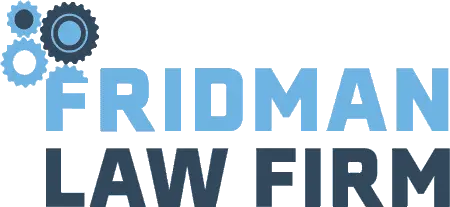Brooklyn Intellectual Property Lawyer

For a surprising number of businesses, their intellectual property is the most valuable asset they own. For an innovative startup, securing a patent may be crucial to ensuring their success and securing their future. For fledgling brands, a recognizable identity can become an asset worth protecting. And for artists, designers, and creatives of all kinds, understanding intellectual property law helps them protect their interests and the value of their work.
Intellectual property law can be complex, and protecting your assets can take time and money. A Brooklyn intellectual property lawyer can help you understand your rights and how to maximize the value of your creativity.
What Is Intellectual Property?
Intellectual property is a category of assets with monetary value that includes intangible creations of the human mind. Intellectual property laws are designed to foster innovation by giving the creator property rights over the intellectual assets they invent. It protects originality and prevents unauthorized copying, giving the inventor any financial benefits that derive from their creativity, usually for a limited period.
Because intellectual property is intangible, it is difficult and complex to protect. A person who owned a valuable bracelet might place it in a safe and hire a guard to protect it. If the bracelet were stolen, the law would be clear about which laws were broken and what the appropriate penalty is.
Because intellectual property consists of ideas, it can be difficult to prove where the idea originated, whether a portion of the idea was stolen or original, what the value of the idea might be, or what the penalty for theft should be. It is possible, after all, for two different people to spontaneously have a substantially similar idea. Intellectual property laws seek to define and specify these issues, but many aspects remain vague or subjective.
Intellectual property rights vary around the world, but they typically protect the right to share, copy, distribute, or profit from the work. Different types of intellectual property are protected differently, depending on the nature of the work and the nature of the rights affected.
Types of Intellectual Property Rights
Brooklyn’s innovators, inventors, and creatives are protected by a range of intellectual property rights. The most common, valuable, and widely protected intellectual property rights in the United States are:
Patent
A patent is designed to protect the rights to an invention. It prevents others from making, using, selling, or trading in the invention in return for making the invention public and sharing it with the world. Only the patent holder has the right to sell, license, transfer, or trade the right to the invention. Patents are intended to stimulate innovation and add to the shared knowledge of the world.
To qualify for a patent, the invention must be new, not obvious, and have an industrial application. Natural materials and processes (like minerals, organisms, genes, or biological processes) cannot be patented, even if they were newly discovered by the inventor. In the US, there are three types of patents:
- Utility patents. These are granted for the invention or discovery of a new and useful process, machine, article of manufacture, composition of matter, or a new and useful improvement to any of these. Examples of utility patents include software algorithms, pharmaceutical drugs, or mechanical devices. These have a patent period of 20 years from the date of filing.
- Design patents. These are granted for the invention of a new and original design for an article of manufacture. Examples of design patents include the unique shape of a smartphone, the form of a piece of furniture, or the appearance of a car’s front grille. If the “newness and originality” of an invention resides in both its function and ornamental characteristics, both utility and design patents may be issued for the same invention. Design patents have a patent period of 14 years from the date of issuance.
- Plant patents. These are granted for the invention or discovery and asexual reproduction of a new and distinct variety of plants. Examples of plant patents include new breeds of roses, new types of hybrid plants, or new genetically modified crops. These have a patent period of 17 years from the date of issuance.
Applying for a patent in the US can be a lengthy, expensive process. Applicants must first begin with a detailed search of patent records to determine whether their invention is original, then complete a lengthy and detailed application. The application will first be reviewed for completeness and compliance with US Patent and Trademark Office (USPTO) guidelines.
Because the patent process is time consuming, and protecting new inventions and innovations can be competitive and time-sensitive, you should consult with a Brooklyn intellectual property lawyer about whether a provisional patent is the right choice for you. A provisional application provides a faster, simpler way to receive utility or plant patent protections, with a streamlined application process. A provisional patent gives your invention an earlier date of filing, allows you to use the term “patent pending”, and grants you 12 months to complete the entire formal patent application process. Engaging in both the provisional application as well as the complete application process does add to the total administrative and legal costs, but it can also be an excellent way to be first to the USPTO with a new invention or innovation.
A completed patent application is assigned to an examiner, who determines whether it meets the standards for newness and innovation. If your application is rejected by the examiner, there are many levels of reconsideration and appeals available. When the patent is granted, the applicant must keep it current by paying maintenance fees for the duration of the patent period.
Copyright
A copyright is designed to protect the rights to a creative work. It prevents others from copying, distributing, displaying, adapting, or performing a creative work. Only the copyright holder has the right to transfer, sell, license, or donate the protected work. Copyright does not protect an idea but protects the expression of that idea in a literary, artistic, educational, or musical form. Copyright may be limited in consideration of the public interest, as in the case of “fair use.”
New and original work is protected from copyright the moment it is “fixed in a tangible medium,” and application to the US Copyright Office is not required for works to be protected. In other words, a painting is protected the moment it is painted, a book or a song is protected the moment they are written, a dance is protected the moment it is performed, etc. However, registration at the U.S. Copyright Office is required to pursue a copyright claim against an infringing party or prevent the importation of infringing material.
Like applying for a patent, applying for a copyright requires a detailed search to determine the originality of the work, followed by a lengthy application. If an application is denied, there is a reconsideration and appeal process. Copyrights in the US generally last for the life of the creator plus 70 years and can be bequeathed after death. There is no maintenance fee.
Trademark
A trademark is designed to protect a sign or design that identifies a product or service and uniquely identifies the brand owner. A trademark protects company names, logos, graphic marks, jingles, and other identifiers of the brand. Trademarks are designed to help consumers identify the origin of products. These brand identifiers can become increasingly valuable as a company builds a reputation in the marketplace, and trademark rights ensure that competitors cannot profit from or dilute this value by using similar brand identifiers.
For many startups, securing a trademark might be one of the first intellectual property investments they make. Finding an original company, brand, and product name, as well as creating a visual design package, can be challenging and expensive. Protecting those brand materials with a trademark helps to protect and guard your reputation as the business grows. Like other types of intellectual property, the application process begins with a search to determine whether your marks are original and protectable, and then the application process can begin.
Other types of intellectual property rights include trade secrets, industrial design, plant breeding rights, and more.
How Can a Brooklyn Intellectual Property Lawyer Help You?
Applying for intellectual property protection can be a long, detailed, multi-step process using precise, complex legal terminology. It currently takes an average of 22 months to receive a patent from the USPTO without accounting for additional correspondence or challenges.
There are several ways that a Brooklyn intellectual property lawyer can assist you during this process. You may choose to consult an intellectual property attorney at the very beginning to discuss any potential challenges regarding the work’s protectability. You can choose to hire an intellectual property lawyer to complete the entire application process for you, ensuring that it goes as smoothly and efficiently as possible. You may also choose to consult an attorney if you have received a rejection or objection to your application and want to request reconsideration or appeal.
Finally, it is critical to consult with a Brooklyn intellectual property lawyer if you know or suspect any infringement of your intellectual property rights. If someone is stealing your creative work, infringing on your brand, or replicating your inventions, you have legal rights that should be protected.
Intellectual property law exists to spark innovation and reward creativity, and the Fridman Law Firm cares about protecting the rights of inventors and innovators. We are invested in the success of Brooklyn’s creatives and are ready to fight for your rights. Contact us online or call 212-262-9823 today to learn more about how we can help protect the work and the brand you have spent so much time building.


